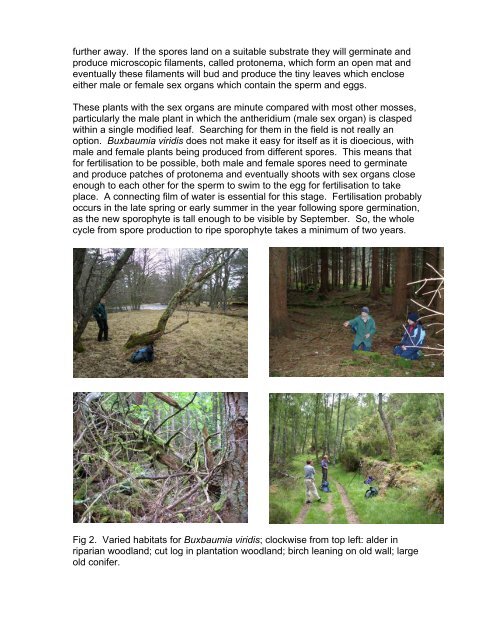Buxbaumia viridis leaflet - Plantlife
Buxbaumia viridis leaflet - Plantlife
Buxbaumia viridis leaflet - Plantlife
Create successful ePaper yourself
Turn your PDF publications into a flip-book with our unique Google optimized e-Paper software.
further away. If the spores land on a suitable substrate they will germinate andproduce microscopic filaments, called protonema, which form an open mat andeventually these filaments will bud and produce the tiny leaves which encloseeither male or female sex organs which contain the sperm and eggs.These plants with the sex organs are minute compared with most other mosses,particularly the male plant in which the antheridium (male sex organ) is claspedwithin a single modified leaf. Searching for them in the field is not really anoption. <strong>Buxbaumia</strong> <strong>viridis</strong> does not make it easy for itself as it is dioecious, withmale and female plants being produced from different spores. This means thatfor fertilisation to be possible, both male and female spores need to germinateand produce patches of protonema and eventually shoots with sex organs closeenough to each other for the sperm to swim to the egg for fertilisation to takeplace. A connecting film of water is essential for this stage. Fertilisation probablyoccurs in the late spring or early summer in the year following spore germination,as the new sporophyte is tall enough to be visible by September. So, the wholecycle from spore production to ripe sporophyte takes a minimum of two years.Fig 2. Varied habitats for <strong>Buxbaumia</strong> <strong>viridis</strong>; clockwise from top left: alder inriparian woodland; cut log in plantation woodland; birch leaning on old wall; largeold conifer.
















